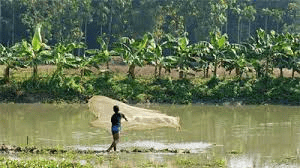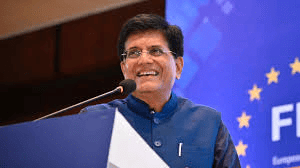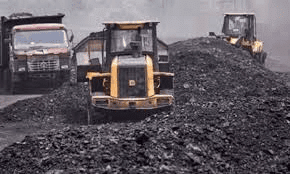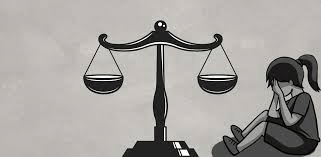UPSC Daily Current Affairs: 21st October 2024 | Current Affairs & Hindu Analysis: Daily, Weekly & Monthly PDF Download
GS3/Environment
Climate Finance to Developing Nations
Source: Economic Times

Why in News?
Climate finance is a pivotal subject in the global discourse surrounding climate change, particularly as developing nations face escalating environmental challenges. These nations often endure severe consequences from climate change—such as floods, droughts, and extreme weather—despite contributing minimally to global greenhouse gas emissions. The upcoming 29th Conference of the Parties (COP29) in Baku, Azerbaijan, from November 11 to 22, 2024, is set to emphasize climate finance, making it a vital forum for addressing this global disparity.
According to the United Nations Framework Convention on Climate Change (UNFCCC), climate finance encompasses financial flows—whether local, national, or transnational—that are directed towards mitigating and adapting to climate change. Funding sources can be public, private, or alternative. The primary applications of climate finance include:
- Mitigation: Efforts aimed at reducing or preventing greenhouse gas emissions.
- Adaptation: Initiatives to assist vulnerable regions and communities in adjusting to climate change impacts.
Developed countries are expected to shoulder a significant portion of climate finance responsibilities, given their historical contribution to emissions. Developing nations require this support to balance their developmental goals with climate action.
Developing countries are particularly susceptible to climate change for several reasons:
- Geographical Vulnerability: Many are situated in areas prone to extreme weather phenomena.
- Economic Dependence on Agriculture: Agriculture, a sector highly sensitive to climate variations, often forms the backbone of their economies.
- Resource Limitations: These nations generally have fewer financial and technological resources to adapt to climate change or recover from associated disasters.
For instance, the International Energy Agency (IEA) reported in 2021 that approximately 675 million people in developing countries lacked access to electricity. These nations face both developmental hurdles and the pressing demand for climate-friendly energy solutions, which tend to be costlier.
The Copenhagen Accord, established in 2009 at the UNFCCC's 15th session, outlined a political agreement where developed nations committed to providing $100 billion annually in climate finance by 2020 to assist developing countries in combating climate change. However, this commitment remains largely unmet. Key challenges include:
- Over-reporting: Developed nations often announce commitments rather than actual fund disbursements.
- Reclassification of Aid: Existing development aid is sometimes recast as climate finance, diminishing the impact of new funding.
- Loans vs. Grants: A significant portion of reported climate finance is in loans rather than grants, increasing the debt burden on developing nations. In 2022, for example, 69.4% of international public climate finance was provided as loans, while only 28% was in the form of grants.
Developing nations contend that climate finance should primarily consist of concessional loans (low-interest loans) to prevent escalating their financial burdens.
India exemplifies a country with ambitious climate objectives coupled with substantial financial requirements. India's climate targets encompass:
- Achieving 500 GW of non-fossil fuel capacity by 2030.
- Producing 5 million metric tonnes of green hydrogen (GH2) annually.
- Expanding Electric Vehicle (EV) adoption across various categories by 2030.
The financial outlay needed to realize these goals is staggering, with estimates suggesting a requirement of ₹16.8 lakh crore for renewable energy projects by 2030. The Green Hydrogen Mission alone necessitates an additional ₹8 lakh crore in investments. To fulfill its EV targets, consumers are projected to spend ₹16 lakh crore on EVs. Looking ahead, India will require ₹850 lakh crore in investments from 2020 to 2070 to achieve net-zero emissions.
As the $100 billion climate finance target approaches its expiration in 2025, there is a call for a new, more ambitious goal known as the New Collective Quantified Goal (NCQG). This goal must encompass:
- Actual disbursements rather than mere commitments.
- New and additional funding beyond existing aid.
- Public funding in the form of direct grants.
- Mobilized private capital resulting from public funding initiatives.
A high-level expert group at COP26 and COP27 estimated that developing countries (excluding China) will need around $1 trillion in external climate finance annually.
Securing adequate climate finance for developing nations faces numerous challenges:
- High Capital Costs: Developing nations often incur twice the capital costs for green technologies like solar energy compared to developed countries.
- Competing Developmental Needs: These nations must balance economic growth with climate initiatives, often requiring external financial support to do so.
As the world gears up for COP29, climate finance stands as a critical issue in global negotiations. Developing countries, including India, necessitate substantial external financial assistance to meet climate targets and adapt to the increasing effects of climate change. The ongoing discussions regarding the $100 billion commitment and the push for a more ambitious target underscore the urgency for developed nations to fulfill their responsibilities, ensuring that vulnerable countries have the resources necessary to effectively combat climate change.
GS3/Economy
Rising Dependence on Agriculture for Livelihoods in India
Source: Indian Express

Why in News?
The landscape of rural India is undergoing a significant transformation, as indicated by the recent All India Rural Financial Inclusion Survey for 2021-22. This survey, commissioned by NABARD, reveals a noteworthy increase in the proportion of rural households reliant on agriculture for their livelihoods, signifying a break from a decades-long pattern of dwindling rural agricultural links.
Growing Agricultural Households in India:
- Statistical insights:
- According to the survey, 57% of rural households were classified as "agricultural" in 2021-22, a considerable rise from 48% in 2016-17.
- The survey defines an agricultural household as one that produces crops or livestock worth more than Rs 6,500 (up from Rs 5,000 in the earlier survey) and has at least one member engaged in self-employment in agricultural activities.
- Income comparison:
- The average monthly income for agricultural households was Rs 13,661 in 2021-22, surpassing the Rs 11,438 for non-agricultural rural households.
- Notably, agricultural households have seen their income from farming rise to over 45% of their total income, an increase from 43.1% in 2016-17.
- This trend spans across various land sizes, illustrating a broad-based rise in agricultural income.
- Lockdown effects:
- The survey period coincided with the aftermath of COVID-19 lockdowns, which significantly impacted economic activities across sectors.
- Agriculture was exempt from many restrictions, potentially leading to an overestimation of its share in rural livelihoods.
- The favorable monsoon seasons from 2019 further supported agricultural productivity, suggesting a complex interplay between external factors and survey results.
- Labour force dynamics:
- According to the National Sample Survey Office’s (NSSO) Periodic Labour Force Surveys (PLFS), agriculture engaged 64.6% of the country’s workforce in 1993-94.
- That share fell to 58.5% in 2004-05, 48.9% in 2011-12, and a low of 42.5% in 2018-19.
- However, post-2019, the farm sector’s share of the employed labour force rebounded, with figures rising to 45.6% and 46.5% in the pandemic years.
Rising Agricultural Dependency Amid Economic Growth:
- The paradox:
- Despite the Indian economy experiencing robust growth, with an annual GDP increase of 8.3% in recent years, agricultural dependency has persisted.
- The proportion of the rural workforce engaged in agriculture rose from 57.8% in 2018-19 to 59.8% in 2023-24.
- This trend presents a paradox: why is a growing economy relying more on agriculture?
- Structural employment issues:
- This paradox can be partly explained by the stagnation in manufacturing employment, which accounted for only 11.4% of the workforce in 2023-24, down from previous years.
- The movement of surplus labour does not appear to be transitioning from agriculture to manufacturing; instead, it is shifting to informal sectors with similar low productivity and wage characteristics.
- Regional disparities in agricultural employment:
- According to the PLFS data for 2023-24, States like Chhattisgarh (63.8%), MP (61.6%), and UP (55.9%) have high agricultural workforce shares, while states like Goa (8.1%) and Kerala (27%) exhibit much lower dependence on agriculture.
- These variations highlight regional economic conditions and the effectiveness of rural development initiatives.
Way Ahead to Address the Rising Dependence on Agriculture for Livelihoods in India:
- The rising dependence on agriculture for livelihoods in India necessitates a thorough examination of underlying causes.
- As the economy grows, the challenge remains to create sustainable employment opportunities outside of agriculture.
- Policymakers need to focus on strengthening the agricultural sector while simultaneously promoting diversification into higher productivity sectors.
- Understanding this paradox is crucial for crafting effective strategies that ensure balanced economic growth and improved livelihoods in rural India.
GS2/International Relations
India’s Shift to a Cautious Approach in Trade Negotiations
Source: Indian Express

Why in news?
India is adopting a more cautious strategy in its trade negotiations, halting talks for free trade agreements (FTAs) with smaller countries like Oman and Peru. This shift is due to concerns that past FTAs have disproportionately benefitted partner countries. The pause in negotiations comes not only due to the widening trade gap but also concerns over the outflow of investment from the country.
India's Trade Agreements with ASEAN
- India's trade agreements with countries like the UAE and ASEAN have led to a significant increase in imports, which has widened the trade deficit.
- ASEAN is a vital trading partner, accounting for 11% of India's global trade, with bilateral trade reaching approximately US$ 122.67 billion during 2023-24.
- The trade between India and ASEAN has surged since the signing of the ASEAN-India Trade in Goods Agreement (AITIGA), but it has not been mutually beneficial.
- From FY 2009 to FY 2023, imports from ASEAN to India increased by 234.4%, while Indian exports only grew by 130.4%.
- Consequently, India’s trade deficit with ASEAN expanded from US$ 7.5 billion annually in 2011 to about US$ 44 billion in 2023.
Deficit with UAE
- After signing the Comprehensive Economic Partnership Agreement (CEPA) in May 2022, India's trade deficit with the UAE widened significantly.
- Within just eight months of the CEPA coming into effect, India's trade gap with the UAE grew by over $5 billion.
- While India's exports to the UAE increased by 11% to $20.25 billion, imports surged by 24.4% to $36.23 billion.
Development of a New SOP
- The Commerce Ministry is creating a new Standard Operating Procedure (SOP) to improve future trade negotiations.
- This SOP will incorporate modern chapters on labor, environment, and trade-offs, focusing on human resource mobilization and the structured hierarchy of negotiating teams.
- The draft will also include consultations with the Ministry of External Affairs (MEA) and the Department of Economic Affairs (DEA) and will reference input from private consultancy groups.
Shift in Focus to Larger Markets and Geopolitically Important Countries
- India is now prioritizing trade agreements with larger markets such as the European Union and the UK, alongside geopolitically significant nations like the Maldives.
- Negotiations with smaller countries are put on hold, as India believes past agreements have not yielded adequate returns.
- India opens up substantial markets for partner countries but feels that the benefits have not been reciprocal.
Reviewing Past FTAs and Tariff Asymmetry
- India is currently reviewing its trade agreement with ASEAN, which has resulted in significant trade deficits since the Covid-19 pandemic.
- This review is expected to conclude by next year and will focus on resolving tariff asymmetries that have placed India at a disadvantage in these agreements.
Stringent Norms for Rule of Origin and Imposition of Anti-Dumping Duties
- Concerns have risen regarding the influx of Chinese investments and products into ASEAN, leading to fears of rerouting Chinese goods into India through this region.
- The Economic Survey indicates that Chinese firms are increasingly redirecting supply chains via countries like Mexico and Vietnam.
- In response, India's Ministry of Commerce and Industry has initiated an anti-dumping investigation on various imported goods.
- India is also adopting a stringent approach to the rule of origin in its negotiations with other countries.
Current Negotiating Capabilities
- A significant challenge for India is the lack of expertise and institutional knowledge in trade negotiations.
- Foreign negotiators often have more experience, placing India at a competitive disadvantage.
- Unlike foreign counterparts, Indian officials often face rotation, which impacts continuity and expertise in negotiations.
Exit from RCEP and Concerns over Rising Imports from China
- India's withdrawal from the Regional Comprehensive Economic Partnership (RCEP) stemmed from fears of increasing imports from China.
- Since RCEP's implementation in 2022, trade between China and ASEAN has surged, intensifying competition for India in the region.
Other Challenges
- India faces additional hurdles, including a global economic slowdown, heightened tariffs and non-tariff barriers, and new trade regulations such as the EU's Carbon Border Adjustment Mechanism and Deforestation Rules.
GS3/Environment
The Huge Cost of Moving Away From Coal
Source: Indian Express

Why in news?
A recent report from iForest (International Forum for Environment, Sustainability and Technology) highlights that India will require over $1 trillion (approximately Rs 84 lakh crore) over the next 30 years to facilitate a just transition from coal. This comprehensive study is the first of its kind, estimating the costs associated with phasing out coal mines and power plants while ensuring socio-economic stability in regions dependent on coal.
Coal Resource in India
- The National Coal Inventory of 2023 indicates India's total estimated coal reserves are 378.21 billion tonnes as of April 1, 2023.
Coal Production
- In the fiscal year 2023-24, India produced 997.83 million tonnes of coal, reflecting a growth rate of 11.71%.
Coal Import
- Coal can be imported freely under the Open General Licence policy, allowing consumers to import based on their commercial needs.
- The steel sector primarily imports coking coal to meet its requirements and enhance quality.
- Other sectors, such as power and cement, import non-coking coal, with total coal imports reaching 261 million tonnes in 2023-24.
About Just Energy Transition and Challenges Associated
- A "just" energy transition aims for an equitable shift to a low-carbon economy, considering the needs of workers and communities reliant on fossil fuels.
- As the second-largest coal producer globally, India employs a significant workforce in coal mining, thermal power generation, logistics, and related sectors.
- Public sector coal companies employ over 360,000 individuals, with many more in private companies.
- With a target for net-zero emissions by 2070, expanding renewable energy capacity is critical.
- However, ensuring that coal-dependent workers and regions are not adversely affected during this transition presents a considerable financial challenge.
- Significant investment will be necessary to balance economic stability with climate objectives.
Costs Associated with a Just Transition
- A study on India's transition from coal, utilizing assessments from coal-dependent districts and international examples from South Africa, Germany, and Poland, identified eight major cost components:
- Mine closures and site repurposing.
- Retiring coal plants and converting them to clean energy sources.
- Training workers for green jobs.
- Encouraging the establishment of new businesses.
- Providing community support.
- Investing in green energy.
- Compensating states for lost revenue.
- Planning costs.
- Nearly 48% of the estimated $1 trillion needed over 30 years is earmarked for green investments to replace coal-based energy infrastructure with cleaner options.
Source of Funds for this Transition
- Financing India's transition from coal demands a mix of public and private investments.
- Public funding through grants and subsidies will primarily cover "non-energy" costs, such as community support, training for coal workers, and assistance for new businesses.
- India’s $4 billion District Mineral Foundation funds, sourced from mining operations, alongside Corporate Social Responsibility (CSR) funds, can support new ventures and communities reliant on coal.
- Private investment is anticipated to address most "energy costs," emphasizing the development of clean energy projects and green infrastructure.
South Africa’s Just Energy Transition
- South Africa’s Just Energy Transition Investment Plan (JET-IP) will receive international financial assistance from countries such as the UK, France, Germany, the US, the EU, the Netherlands, and Denmark.
- The plan requires $98 billion over two decades, with $8.5 billion allocated for the period between 2023-2027.
- The majority of the funds will be directed towards green energy projects, with financing sourced from concessional loans, grants, and public-private partnerships.
Germany’s Legislative Action on Coal Phase-Out
- Germany has established legislation to end coal power generation by 2038, allocating over $55 billion for the closure of coal mines and power plants.
- The funds will also support coal-dependent regions by promoting economic development.
- The study examined four coal-dependent districts: Korba (Chhattisgarh), Bokaro and Ramgarh (Jharkhand), and Angul (Odisha) to evaluate their coal dependency and assess transition costs.
- In Bokaro, coal industries account for 54% of the district's domestic product, employing around 139,000 workers in coal mining, power generation, and related sectors like steel and cement.
- It is estimated that a complete phase-out of coal in Bokaro will commence after 2040, requiring Rs 1.01 lakh crore over 30 years to rehabilitate workers, repurpose coal sites, and establish green energy infrastructure.
GS2/Governance
How to Realise the Full Potential of Digital Public Infrastructure
Source: Indian Express

Why in News?
The adoption of the Global Digital Compact (GDC) at the United Nations Summit marks a significant milestone in digital governance. This initiative is in line with the multi-phase Universal Safeguards for Digital Public Infrastructure (DPI) launched in 2023 by the Office of the UN Secretary-General’s Envoy on Technology (OSET) and the United Nations Development Program (UNDP). As digital governance progresses, the GDC fosters global collaboration, with India emerging as a leader in promoting DPIs, especially for the Global South.
An Analysis of India’s Leadership in Promoting Digital Public Infrastructure (DPI)
- Pioneering Initiatives: Aadhaar and UPI
- India's Aadhaar program is the world's largest digital identity system, providing unique identification to over 1.3 billion people.
- Launched in 2009, Aadhaar ensures secure and verifiable identities, facilitating access to public services.
- This system has improved the delivery of social welfare schemes, minimizing leakages and ensuring subsidies reach intended beneficiaries directly.
- The Unified Payments Interface (UPI), introduced in 2016, has transformed the digital payment ecosystem.
- By August 2024, UPI processed an astonishing 14.96 billion digital transactions in one month, making it a leading global payment system.
- By harnessing digital identities, India has created a comprehensive ecosystem linking individuals to essential services like banking, healthcare, and education, promoting financial and social inclusion.
- The Modular Open-Source Identity Platform (MOSIP)
- MOSIP is a not-for-profit initiative aimed at helping countries develop their own digital identity systems.
- This customizable, open-source platform provides the necessary technological framework for digital identity initiatives.
- By offering MOSIP, India enables other nations to establish secure and interoperable digital identity systems without incurring high licensing fees or relying on proprietary software.
- Driving Economic Inclusion through DPIs
- India's emphasis on digital public infrastructure aligns with its objective of enhancing economic inclusion.
- By providing digital identities and promoting cashless transactions, India has made substantial progress in integrating marginalized communities into the economy.
- The Pradhan Mantri Jan Dhan Yojana (PMJDY) has significantly increased bank account ownership, verifying identities through Aadhaar.
- Bank account ownership surged from 25% in 2008 to over 80% in recent years.
- Existing Challenges and the Need for Impact Assessments
- Despite the enthusiasm for DPIs, critical challenges remain that require attention.
- The UN's safeguard framework emphasizes managing and regulating DPI deployment to ensure inclusivity, accessibility, and effectiveness.
- As DPI initiatives expand in foundational areas like digital identity and payments, as well as sector-specific applications like healthcare and education, effective management becomes increasingly vital.
- Necessity of Impact Assessment
- Impact assessments for DPIs are crucial in India, where these infrastructures have led to significant advancements.
- For example, the percentage of adults with bank accounts rose from 25% in 2008 to over 80%, with women holding 56% of these accounts.
- Digital transactions are a major economic driver, contributing nearly 50% to India's nominal GDP in the fiscal year 2022-23.
- These achievements have also enabled access to credit through pre-approved loans on platforms like UPI.
- However, beneath these impressive statistics are complex issues regarding the real impact of DPIs on people's livelihoods and social agency.
Necessary Measures to Overcome the Challenges Associated with Impact Assessments
- Integration of Impact Assessment During Design Phase
- Incorporating impact assessments during the design phase of DPIs ensures systematic data collection from the beginning.
- This approach creates a continuous feedback loop, allowing for regular monitoring and adjustments to maintain effectiveness and equity.
- Transparent and Secure Data Collection System
- A transparent and well-governed data collection system is essential for improving assessment quality.
- While data minimization is often prioritized to prevent misuse, this can hinder effective evaluations.
- Building trust with citizens and the private sector can lead to higher quality assessments.
- Advancements in technology are needed to improve data discoverability and utility, facilitating more accurate evaluations of DPI impacts.
- Dialogue Among Stakeholders
- Establishing a dialogue among stakeholders is vital for creating a community that includes policymakers, assessment agencies, the private sector, and civil society.
- Regular engagement fosters participatory governance, accountability, and shared responsibility for DPI success.
- Clear protocols for this engagement ensure that all perspectives are considered, leading to continuous improvement in digital infrastructure design and implementation.
- India's Influence on Global Digital Policies, Future Role and the Path Forward
- India's experiences with Aadhaar and UPI have established it as a thought leader in global DPI discussions.
- During its G20 presidency, India advocated for DPIs as tools for accelerating development in low- and middle-income countries.
- By sharing its experiences and best practices, India encourages other nations to adopt inclusive, scalable, and secure digital infrastructure approaches.
- Influence Beyond Policy Advocacy
- The World Bank's ID4D initiative, which aids nearly 60 countries in building foundational identification systems, draws on India's Aadhaar model.
- The G2Px program, focused on digitizing government-to-person payments, benefits from India's experience with direct benefit transfer schemes utilizing digital identities.
- These initiatives reflect a growing understanding of the necessity for inclusive digital ecosystems where foundational infrastructures support broader digital transformation.
- India’s Future Role and the Path Forward
- India's belief in the transformative power of DPIs is well-founded but must be complemented by a commitment to regular and thorough impact assessments.
- Institutionalizing these assessments allows for timely corrective measures, ensuring that the potential of DPIs is fully realized.
- This strategy will not only transform economies but also enhance the lives of millions within and beyond India.
Conclusion
- The adoption of the Global Digital Compact signifies a crucial step toward global collaboration in digital governance.
- As DPIs gain importance, India's leadership and experience provide a valuable model for other nations.
- However, progressing forward requires a careful focus on the challenges of impact assessments, data collection, and inclusive governance.
GS2/Polity and Governance
Prohibition of Child Marriage Act (PCMA), 2006
Source: Live Law

Why in News?
The Supreme Court has rejected the government's plea to enforce the Prohibition of Child Marriage Act (PCMA) over personal laws, urging Parliament to consider banning child betrothals.
About Prohibition of Child Marriage Act (PCMA):
- PCMA was established in 2006 to stop child marriage and work towards ending this practice.
- It replaced the Child Marriage Restraint Act of 1929.
- The main goal of the Act is to stop the formalization of child marriages.
- This Act has provisions to:
- Prevent child marriages
- Support victims
- Increase penalties for those who assist, promote, or conduct these marriages
- According to the Act, the minimum legal age for marriage is:
- 21 years for boys
- 18 years for girls
- Any marriage below these ages is considered a child marriage, which is illegal and can lead to punishment under the law.
- Anyone can report a case of child marriage, whether it has happened or not.
- Nodal Officer:
- The District Collector acts as the Nodal Officer at the district level for enforcing the Act.
- This officer will regularly check how the Act is being applied in their district and take necessary steps for effective enforcement.
- Child Marriage Prohibition Officers (CMPO)are appointed in each state to:
- Prevent child marriages
- Protect victims
- Prosecute offenders
- The CMPO can also:
- Provide legal assistance to victims
- Present children needing care to the Child Welfare Committee or a First-Class Judicial Magistrate if there is no committee available
- Petition:
- A petition to cancel a child marriage can only be filed by the girl or boy who was under 18 when they got married.
- A guardian and the CMPO can file this petition on behalf of a minor.
- The District Court, which includes the Family Court and other specified civil courts, can grant the annulment of the marriage.
- Punishments:
- Child marriage is a crime that can result in imprisonment, fines, or both.
- Courts can issue orders to stop the performance of child marriages.
- Offenses under this Act are serious and are treated as cognizable and non-bailable.
- Protection:
- The law provides various forms of support for rescued children, including:
- Medical aid
- Legal assistance
- Counseling
- Rehabilitation support
- It grants legal recognition to all children born from child marriages and ensures provisions for their custody and support.
- It also secures housing and maintenance for the female involved in the marriage.
- The law provides various forms of support for rescued children, including:
GS 3/ Science and Technology
Coelogyne tripurensis
Source: India Today

Why in News?
A new species of orchid named Coelogyne tripurensis was recently discovered in Jampui Hills, in Tripura's North District.
About Coelogyne tripurensis:
- A new species of orchid has been discovered.
- This plant was found in the wet broadleaf forests of Jampui Hills in Tripura, located at the western edge of the Indo-Myanmar Biodiversity Hotspot.
- The genus to which this new species belongs contains about 600 species and is native to the Indian subcontinent, Southeast Asia, and the Southwest Pacific Islands.
- Most species in this genus are epiphytic (rarely found on rocks or in the ground) and are well-liked by gardeners for their ornamental value and ease of care.
- The new species falls under the section called Fuliginosae, which is known for its unique traits like showy flowers, a special labellum (the lip of the flower), and keels (ridge-like structures).
- Plants in this group can show a lot of variation in their appearance, making it hard to identify them clearly.
GS 3/ Environment and Ecology
African Baobab
Source: DTE

Why in News?
New research by South African ecologists has refuted the claim that the African Baobab (Adansonia digitata) tree is dying due to climate change.
About African Baobab:
- Baobabs are trees that can live for a very long time, ranging from small to large sizes, typically between 20 to 100 feet tall. They have wide trunks and dense tops.
- Some baobabs can live for thousands of years. The oldest known baobab tree, called the Panke baobab in Zimbabwe, was estimated to be 2450 years old.
- These trees are usually found alone and are very strong, growing well in dry, open regions like the savannas of southern Africa and western Madagascar.
- Ecological importance:
- Baobab trees are essential to the dry African savanna ecosystem. They help maintain moisture in the soil, support nutrient recycling, and reduce soil erosion due to their large root systems.
- During the rainy season, they absorb and store water in their large trunks, which helps them produce a nutritious fruit during the dry season. This fruit can grow up to one foot long.
- The fruit contains tartaric acid and Vitamin C, making it an important food source for various species.
- Baobabs are crucial for their environment; they help lessen the effects of climate change and provide food and shelter for both animals and humans.
- The fruit is known for being high in fiber, acting as a natural prebiotic that supports the growth of healthy bacteria in the gut.
|
38 videos|5258 docs|1111 tests
|
FAQs on UPSC Daily Current Affairs: 21st October 2024 - Current Affairs & Hindu Analysis: Daily, Weekly & Monthly
| 1. What is the significance of climate finance for developing nations like India? |  |
| 2. How has the dependence on agriculture for livelihoods changed in India? |  |
| 3. What challenges does India face in addressing agricultural dependency amid economic growth? |  |
| 4. What steps can be taken to reduce the rising dependence on agriculture for livelihoods in India? |  |
| 5. How is India's cautious approach in trade negotiations related to its agricultural sector? |  |
















